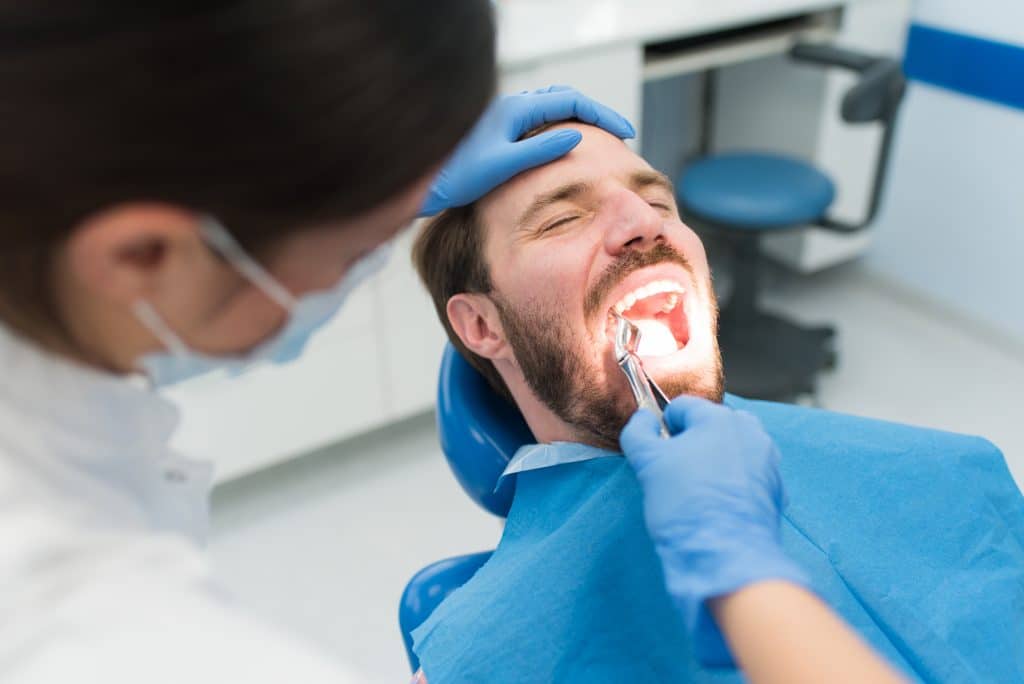Did you know that when you lose a tooth your adjoining teeth will move to fill the gap? That might sound like a good thing, but it actually throws off your bite.
“Teeth always want to have an opposing tooth to touch, so you can chew, because that’s their main job,” explains Austin Dentist. “Teeth that don’t occlude properly, meaning the bite is off, can cause a lot of pain. That’s why we usually recommend that patients fill the gap left by a missing tooth with an implant, a bridge, or a clip-in replacement.”
Depending on which tooth is missing, implants are the option most recommended by dentists because they:
- last the longest
- are stronger than your natural teeth
- don’t damage other teeth
Historically, implants were the more expensive and therefore less frequently chosen option for replacing a lost tooth. Because there were other, less costly, ways to fill that empty space, insurance companies either didn’t cover implants or only partially covered them.
That’s been changing, though. To understand why, it’s helpful first to talk about other options for replacing a lost tooth.
“Flipper” or clip-in partial: A flipper is an acrylic retainer that has the replacement tooth attached to it. If you’re not sure whether you want an implant or bridge, a flipper or clip-in partial is a lower cost way to keep the space open while you decide. A flipper can also be used while the gums and bone are healing after a tooth extraction to fill the space with a natural looking prosthetic tooth.
Flippers are convenient and as easy to pop in as a mouth guard. They remove easily for cleaning; and your dentist can create one in advance of a tooth removal so you never have a visible gap. They are cheaper than other alternatives and ideal for a temporary option.
“What I’ve seen among many of my patients is that having a removable tooth isn’t very fun,” says Dr. Nguyen. “Bridges and implants are more comfortable and permanent options for the long-term. But if you’re only replacing one tooth, it’s a convenient, lower-cost option for the short-term.”
A bridge: Because they are the best-looking option for front teeth, bridges are still considered the standard of care. A traditional “bridge” is aptly named because the dentist uses crowns on existing teeth to support a prosthetic tooth bridging the gap. Like a flipper, a bridge can be prepared before a planned tooth removal.
One of the major downsides of a bridge is that the adjoining teeth are shaved down to fit the crowns and experience wear and tear from supporting the bridged tooth. Without proper care, they may eventually need to be replaced as well. Since a bridge only lasts an average of seven years, it can require several replacements over a lifetime, which drives up the cost over time.
Implant: One of the main reasons implants are growing in popularity even among insurance companies is that they’re considered a permanent replacement. They feature a bite force 10,000 times greater than natural teeth and are easier to clean and maintain than a bridge.
“Keeping your own teeth is healthier and improves your longevity, so replacing one tooth without cutting down others for a bridge is a better way to keep more of your own teeth,” says Dr. Nguyen. “I think insurance companies are starting to see the cost-benefit of implants versus paying for a bridge three or four times, as well.”
One of the drawbacks of implants is that they do take longer to complete and require several dental visits. First, a titanium screw is placed into the bone where the root used to be. You generally have to wait three to six months for the bone to grow around the implant and heal. Once healed, the false tooth is placed on the screw. The end result is a prosthetic tooth that is actually stronger than your natural teeth.
“If not done properly, an implant can fail, which is why I do screw-retained implants only,” says Dr. Nguyen. “As with all your teeth, an implant’s health and longevity boils down to maintenance, brushing and caring for it properly.”
If you’re thinking about getting an implant, Dr. Nguyen notes that there are a lot of cheap imports on the market these days, leading to an increase in the failure rate of implants. “You want to make sure you’re getting a brand that’s reliable and high quality,” she says.
Contact TRU Dentistry Austin today to schedule a consultation. Your dental health starts here. And now through the end of the year, we’re offering new patient specials to help you achieve a healthy, beautiful smile! Book your appointment today and experience the TRU difference!
2708 South Lamar Boulevard, Suite 100A, Austin, TX 78704 | (737) 203-8538 | info@trudentistryaustin.com

